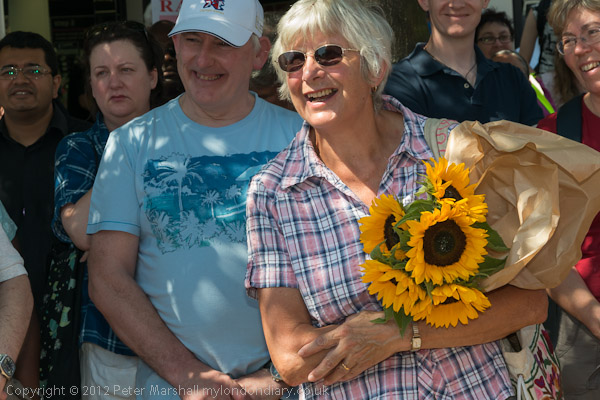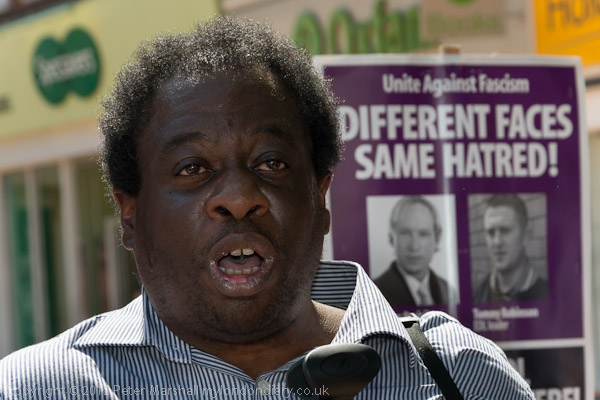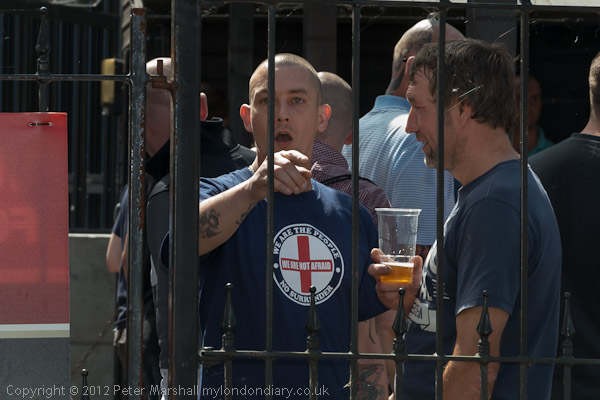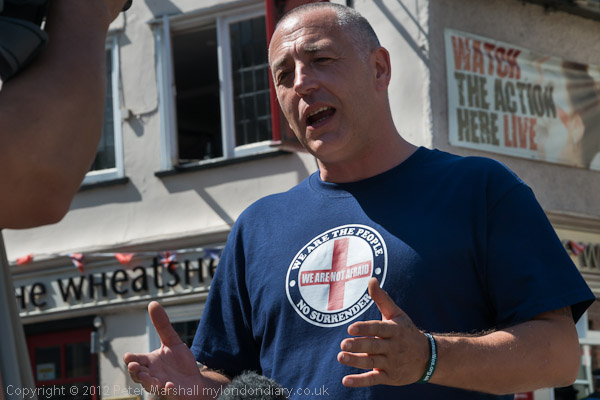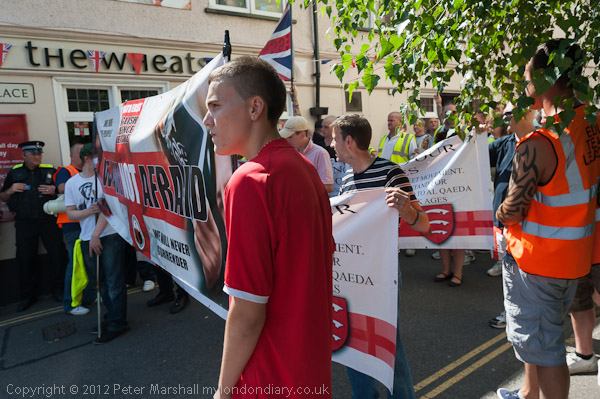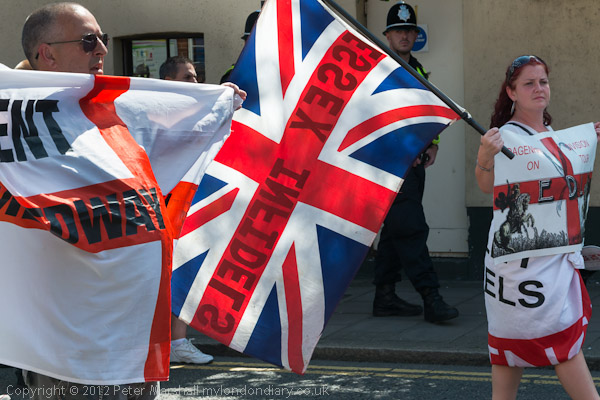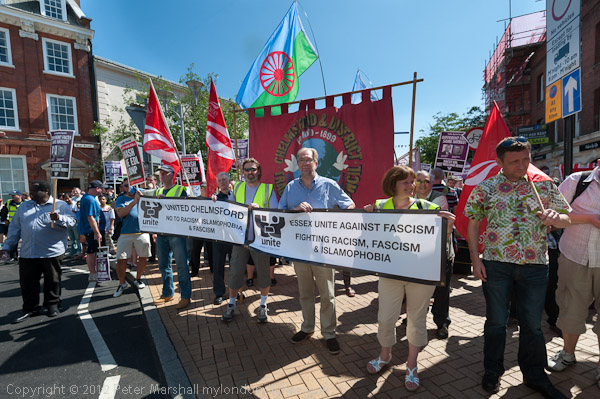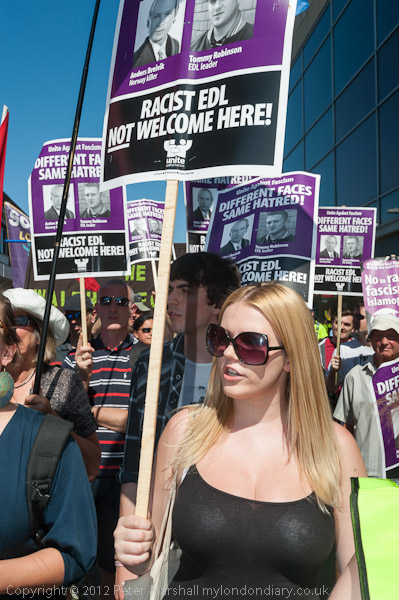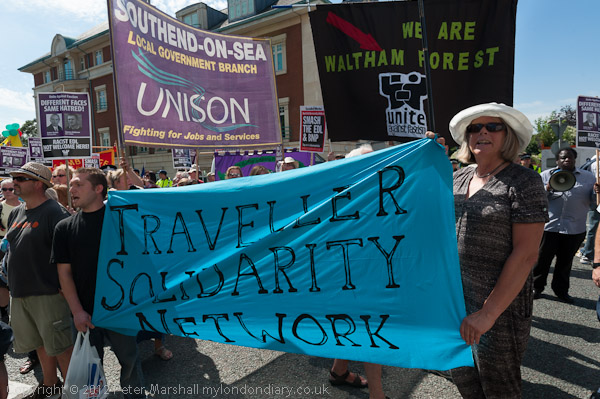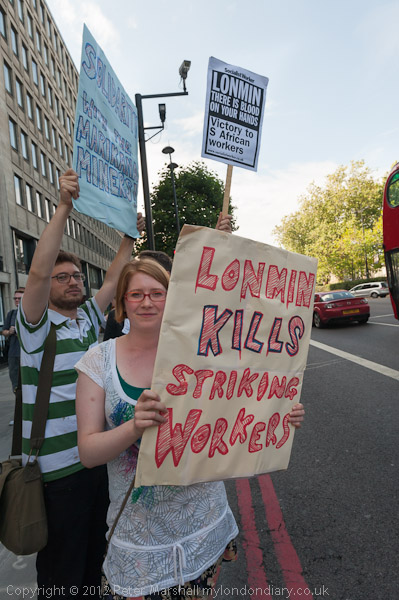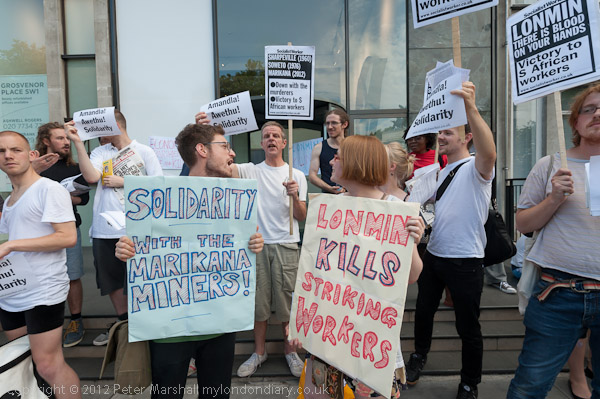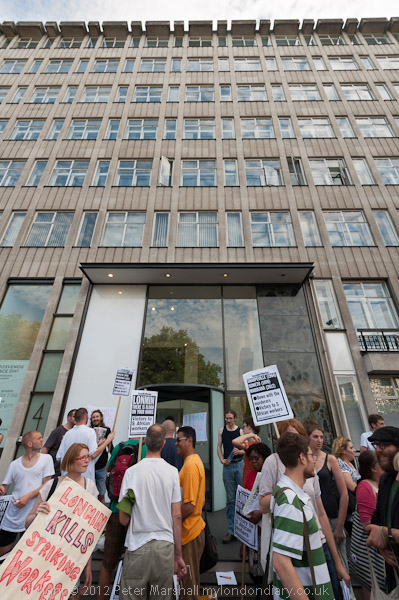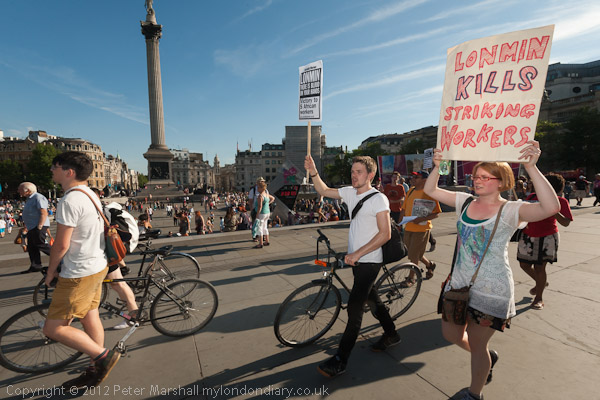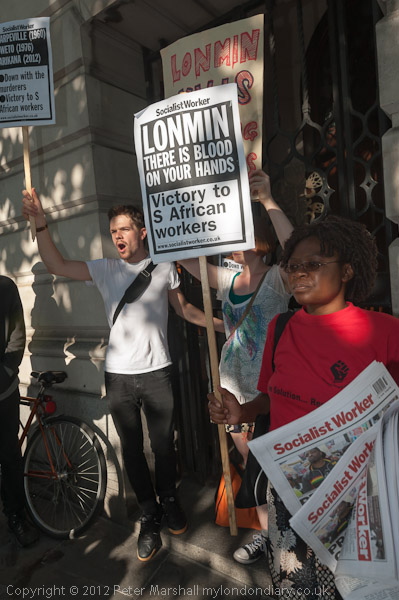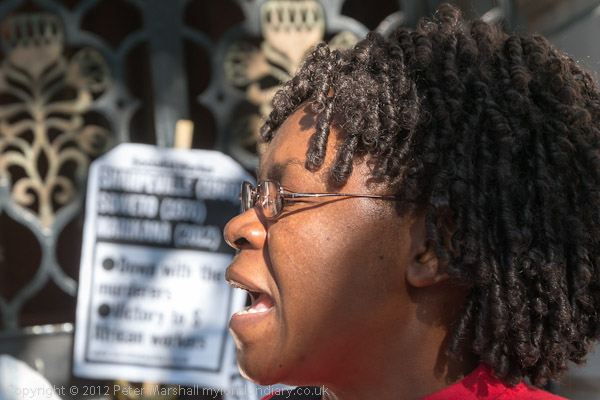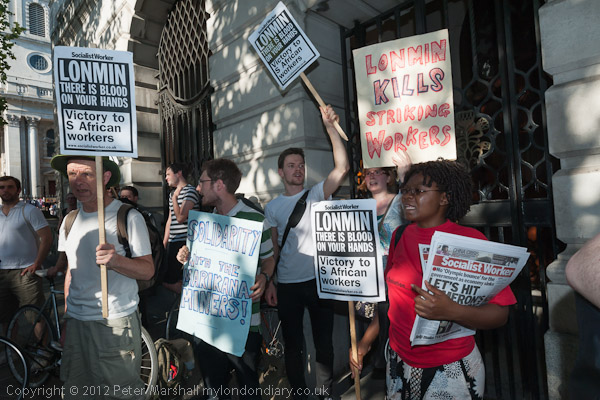Marikana Massacre Remembered – Two events in London on Wednesday 16th August 2017 marked the 5th anniversary of the massacre when 34 striking miners were shot dead by South African police at Lonmin’s Marikana platinum mine.

As well as those killed in what “was the most lethal use of force by South African security forces against civilians since the Soweto uprising of 16 June 1976” at least 78 miners were injured and around 250 were arrested.

A press statement three days ago from SERI, the Socio-Economic Rights Institute of South Africa gives more details of the event and the failure of the government to compensate many of those involved and the continued denial of criminal responsibility.
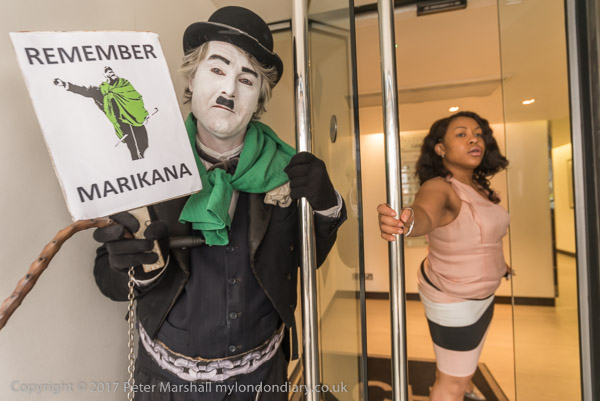
This states that “of the 315 claimants, about 129 people have received nothing, including all eleven family members of the murdered Thobile Mpumza” and accuses the police of attempting to tamper the evidence in the criminal cases. Although there are six officers on trial for an event in which three miners and two police officers were killed three days before the massacre, “No one has been charged for the events of 16 August.”
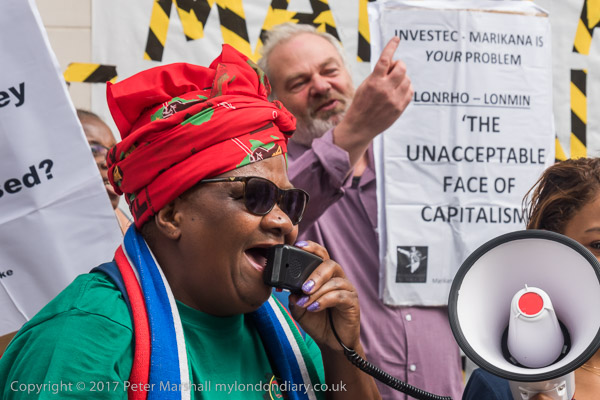
The mine was in 2012 owned by the UK based Lonmin plc, formery Lonrho plc, which became notorious under the leadership of CEO Tiny Rowlands from 1962 until 1993. It was a company at the heart of the British establishment. Duncan Sands, the son-in-law of Winston Churchill and a minister in several Tory governments, became is chair in 1972, and Sir Angus Ogilvy, the husband of Princess Alexandra was a director until he had to resign after the company’s involvement in breaking the sanctions against Rhodesia was revealed – described by then Prime Minister Edward Heath in 1973 as “an unpleasant and unacceptable face of capitalism.”

Lonmin was acquired by multinational mining and metals process group with its headquarters in Johannesburg in 2019 Sibanye-Stillwater, making the group the worlds largest producer of platinum and rhodium among its other precious metals and other interests. It is one of the four largest private employers in South Africa.

In August 2017, Lonmin was still in charge, and protesters met outside its London offices in Mayfair for a lunchtime protest.
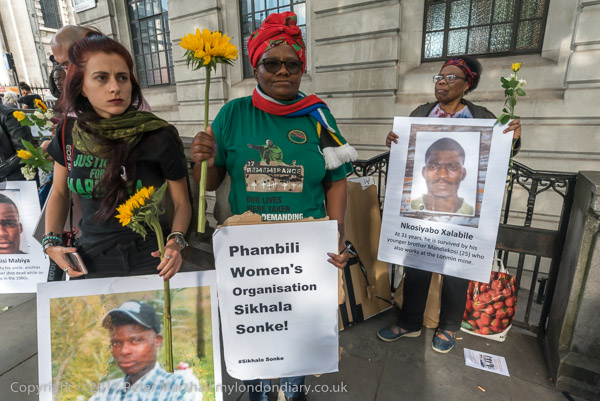
They held up large photographs of the dead and called for a public apology by Lonmin and the ANC government, particularly Cyril Ramaphosa, in 2012 on the board of Lonmin and now President of South Africa, of as well as the payment of reparations to the dependent of those killed and those injured and arrested, both on the 16th August and at the police killing and injuring of women a month later. Ramaphosa had urged the police to take firm action against the strikers before the masscre.
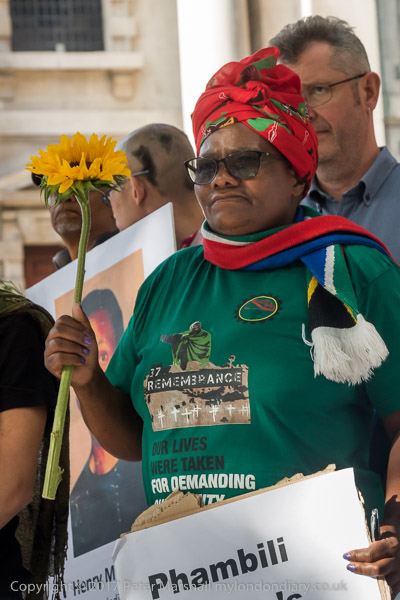
Among those taking part were Primrose Nokulunga Sonti and Thumeka Magwangqana from the Marikana women’s organisation Sikhala Sonke (We Cry Together) who had come to the UK asking to meet with Lonmin representatives – but were ignored. They tried to take a letter into the offices for Lonmin but were refused entry, eventually giving the letter to the receptionist who promised to deliver it.
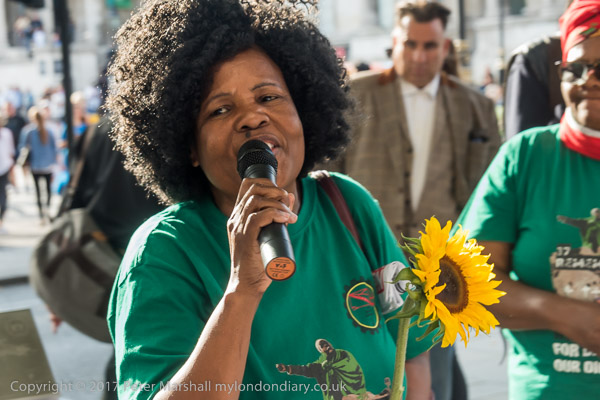
In the early evening there was the annual vigil outside the South African High Commission in Trafalgar Square on the anniversary of the massacre, organised by the Pan-Afrikan Society Community Forum (PACSF) and Marikana Miners Solidarity Campaign.
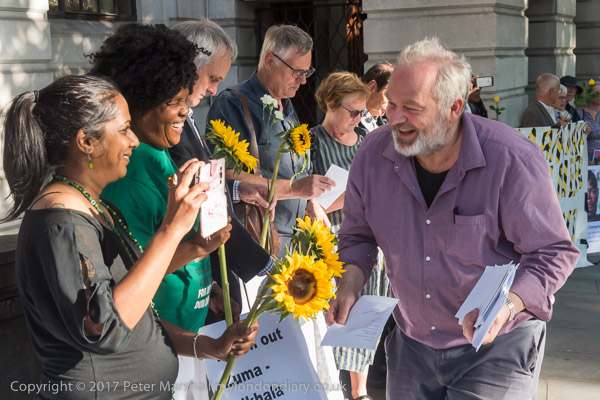
People again held the pictures of the murdered miners which also had their names and a brief description. Some had come with yellow flowers and these were handed out to those who had come to take part in the vigil.
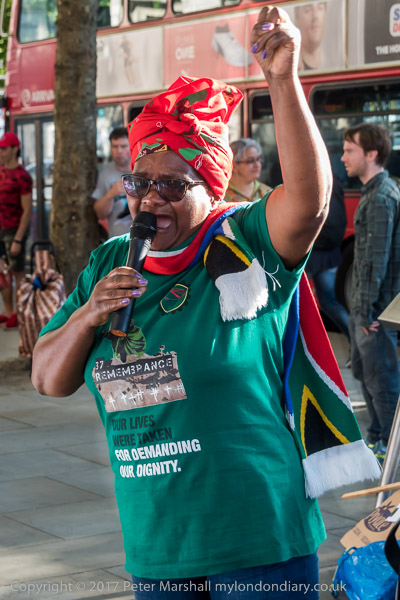
Among those who spoke at the event were the two women from Sikhala Sonke who gave a powerful presentation about the effects of the massacre. I had to leave as this ended and before the pictures were taped to the locked gates of the High Commission and people came to lay flowers.
More on My London Diary at Justice for Marikana vigil and Marikana Massacre Protest at Lonmin HQ.
Flickr – Facebook – My London Diary – Hull Photos – Lea Valley – Paris
London’s Industrial Heritage – London Photos
All photographs on this page are copyright © Peter Marshall.
Contact me to buy prints or licence to reproduce.
